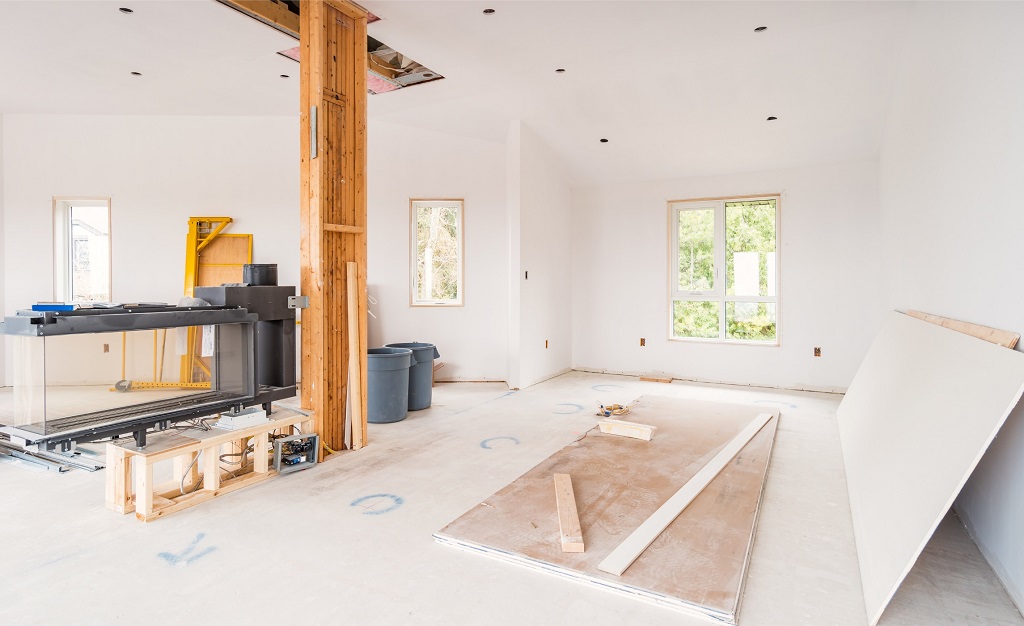Updated: May 18, 2022
Have you experienced a horrible renovation or know someone who has? A well-constructed contract can go a long way towards preventing nightmare situations. Here are tips on how to prevent the most common and costly mistakes too often encountered with Home Renovation Contracts. We grouped them into three phases of a contract’s life: Preparing, Executing and Managing.
These mistakes are costly not only in terms of money, but in terms of time, stress, inconvenience and disappointment. At “best”, a poorly crafted contract can be the root cause of an overwhelming feeling of dissatisfaction that the final results did not match your expectations. At worst, these mistakes can lead to highly contentious, costly and time-consuming litigation. It is not enough to simply hire a reputable, licensed and trustworthy contractor, as even honest and responsible parties can have deeply contested disputes.
Table of Contents
- Mistakes to Avoid Preparing a Renovation Contract
- Mistakes to Avoid Executing a Renovation Contract
- Mistakes to Avoid Managing a Renovation Contract
Also see:
Mistakes to Avoid Preparing a Renovation Contract
As each project and home have their own unique challenges and requirements, the preparation phase requires fleshing out all important details of the project that matter most to you, as well as what level of professionalism and service you require from your hired contractor.
Contracts with fewer details will have a higher likelihood of encountering a dispute, whereas more details will reduce the chances that you, the homeowner, will be disappointed in the process and final results.
One reassuring tip to keep in mind is that any “imperfect” contract can be improved by simply creating an Addendum, to address any issues that may arise mid-project that were not adequately addressed in the originally executed version. Change Orders can be viewed as an effective type of Addendum.
- Not Receiving Detailed & Comparable Proposals from Multiple Contractors
- Accepting a Contractor’s Contract Without Requesting Any Modifications
- Not Knowing Your Consumer Rights or Understanding the Essentials of a Renovation Contract
- Not Comparing Your Contract With 3rd Party Samples
- Not Including a Workmanship and Cleanliness Clause
- Not Accounting for Changes and Cost Overruns
- Not Defining a Strict Payment Schedule & Process
- Not Incorporating Lien Release Waiver Requirements
- Neglecting to Take Ample “Before” Photos of the Project Area

1. Not Receiving Detailed and Comparable Proposals from Multiple Contractors
Homeowners can quickly learn a lot about a renovation project by receiving detailed proposals from reputable contractors. No two contracts will be identical, but the homeowner should incorporate details representing “the best” approaches and terms from all proposals into the final contract.
Highly qualified contractors will provide more details to demonstrate their knowledge and quality of their craft. This is done to provide supporting evidence as to why their cost-structure may be higher than that of their competitors.
Experienced reputable contractors will also incorporate processes and general requirements that improve the overall experience and satisfaction for the customer. The best in the industry apply their learnings from years of experience to help prevent bad incidents from reoccurring.
2. Accepting a Contractor’s Contract Without Requesting Any Modifications
It is common to be in a rush to initiate a renovation project once you have found a contractor to your liking. Moreover, the chosen contractor will have likely submitted more project details compared to other competing bids. Though these details can provide a great beginning point for a well-written contract, you need to pour over the details not only to confirm WHAT will be done, but HOW, WHEN, WHERE, by WHOM, etc.
Even when larger, more established companies require customers to sign standard templated versions of their contract, it never hurts to ask for changes or further clarification. Fair alterations can be accommodated with an addendum. At a minimum, the company can provide written explanations for anything that you find unclear or worrisome.
3. Not Knowing Your Consumer Rights Or Understanding the Essentials of a Renovation Contract
Reputable contractors will be proactive in letting you know of important consumer rights for a given locale, such as the “right to rescind” period and the maximum down payment permissible by law (often 10%). Less reputable contractors, on the other hand, may disregard local statutes altogether.
Some state laws may supersede explicit clauses entered into the contract. An example could be the length of a Construction Warranty. A contractor could offer a 6-month warranty for completed work in a state that requires contractors to honor a 1-year warranty.
We recommend reading our article The Essential Elements of a Renovation Contract to understand the key components of a home improvement contract.
4. Not Comparing Your Contract With 3rd Party Samples
We recommend searching for both strong “generic” renovation contracts to confirm the core sections you wish to include, as well as “specific” renovation contracts that pertain to your project type. You should not only look for applicable examples, such as “Kitchen Remodel” or “Bathroom Remodel”, but also examples of important underlying work, such as “Fix Water Intrusion Issue” or “Hot Mopping an Upstairs Shower Stall”.
Understanding and incorporating sufficient warranty periods for specific types of work is also important, especially if seasonality will be a critical test for your project – e.g. extreme colds of winter; heavy rains during the rainy season; extreme heat during summer; etc.
Homeowners also need sufficient time to fully use a given space to uncover any issues of durability or functionality. Walkthroughs are helpful, but time and persistent usage are the best tests for any home improvement project.
5. Not Including a Workmanship and Cleanliness Clause
Make sure there is a clause for workmanship and cleanliness of your project environment. It is imperative to consistently take quality photos each day during the project, after the crew has left for the day. Take note of workmanship, and cleanliness of the workspace.
The practice of daily walkthroughs and photo documentation provides vital contractual insurance and quality assurance, especially should the renovation project go awry. Photos of inadequate workmanship helps keep the project moving forward, while also enforcing quality expectations. Reminders of unfinished or unapproved work provides persistent incentive to the general contractor in order to receive full payment for the project.
Photos also provide the added benefit of “meta” data. You will be able to provide evidence of stages of your project verified by the time-date stamp within photo properties. A case in San Francisco became contentious when the homeowner claimed that the contractor had installed a high-end toilet incorrectly. The contractor responded, in writing, that the homeowner was at fault because he did not inform the contractor what type of toilet was being purchased and they had spec’d the area for a standard toilet. Furthermore, the contractor wrote in his response that by the time the homeowner had purchased the toilet, the tiling had already been completed.
The homeowner, unbeknownst to the contractor, had been taking pictures of the work each evening when he returned from work. Photographic evidence proved that the date of the invoice of the toilet purchase was before the tile was actually delivered. A photo of the tiles sitting in the garage together with the properties of the photo proved that the contractor had lied.
Furthermore, a photograph taken of the toilet area, on the day after the toilet was purchased, proved that there had been no tile on the floor. The homeowner had instructed that contractor on the specification of the toilet, as he had already performed the electrical rough for the toilet power cord. The area where the new toilet was being installed was previously a shower stall, so there would have been no reason for the electrical rough to be there beforehand. Caught in his lies, the contractor had to accept fault for not following the specifications for the high-end toilet placement.
6. Not Accounting for Changes and Cost Overruns
Any large, complex home improvement project is highly likely to encounter a necessary deviation for the original project scope or details. Change Orders are the necessary mechanism to handle “future unknowns”. In tandem, the homeowner should also include terms that explicitly state that any deviation of defined methods and materials also require a mutually approved Change Order. This clause prevents a contractor from changing an agreed upon construction technique unilaterally, without homeowner approval.
Cost overruns can also be significantly curtailed with fixed-cost contracts and requiring any and all changes to the cost-structure to require an approved Change Order.
7. Not Defining a Strict Payment Schedule & Process
Payments need to be connected to milestones to ensure that the contractor has consistent financial incentive to sufficiently advance the project. Withholding a milestone payment, gives the Homeowner leverage to ensure that the respective work is adequately and promptly done. Never pre-pay for unperformed labor, with the exception of a making a standard down payment to kick start a project.
8. Not Incorporating Lien Release Waiver Requirements
A mechanics lien waiver is a document that releases financial claims that a General Contractor, subcontractor, materials or equipment supplier (Lienholder) may have against a homeowner for work performed, as defined in a contract. After receiving payment and signing the waiver, the lienholder will have waived his financial claims against the property. For more detailed information read our article Lien Waivers: What Homeowners Need To Know.
9. Neglecting to Take Ample “Pre” Photos of the Project Area
Many things can go wrong during a large renovation project, however, having supporting photographic evidence can reduce time lost to unnecessary disagreements getting issues corrected. Photos taken prior to the commencement of a project fill the following purpose: preserve a record of preexisting conditions of items that may be damaged or altered (e.g. walls; floors; light fixtures; etc.). “Pre” photos can be used to also confirm if ANY thing was visibly changed that was expected to be changed per the contract.
Mistakes to Avoid Executing a Renovation Contract
By “Executing” we are referring to: the format of the contract; the process of signing the contract; and creating an archived trail of its distribution. A well-written and formatted renovation contract should serve as a helpful reference guide to a project that can help you: enforce quality standards; adhere to specific processes; and implement specific features. You should write the contract as if it were going into a time capsule. The contract should make sense as a standalone document in the distant future, ideally by someone with zero knowledge about the project.
- Signing the Contract Too Soon
- Failing to Use Section Numbers and Page Numbers
- Failing to Have Both Parties Initialize Each Page of the Executed Contract
- Failing to Confirm Key Professional & Business Requirements
- Not Creating an Email Trail of the Executed Contract

1. Signing the Contract Too Soon
In the fortunate case of having a well-defined contract, be sure to confirm that all of the “easy” details are correct. Focusing on the more difficult aspects of a contract can lead to a false assumption that all of the “trivial” information was correctly entered at the onset of the process, such as: address of project; contact information; start date; completion of any other documents or preliminary tasks; material selection; proof of insurance & licenses; etc.
Also be aware of any events that are automatically triggered once a contract is executed. An example would be an exterior painting project that requires the homeowner to select the color palette and paint types within a specific number of days prior to the project start date. If you are not immediately ready for this responsibility, work with the contractor to pick a more amenable start date.
2. Failing to Use Section Numbers and Page Numbers
This formatting treatment provides the following benefits:
- Section numbers and page numbers allow for easy and unambiguous reference to key clauses of the contract, e.g. “Per Section 2.5 on page 2”
- Citing specific sections and clauses will give you an upper-hand if you experience any pushback from the general contractor or workers on any contested work that is documented in the executed contract
- Communicating specific clauses, with archived written communication, is a provable fact that would support you in any litigation circumstance. General contractors know this.
3. Failing to Have Both Parties Initialize Each Page of the Executed Contract
Having a signed, fully executed contract is important to begin any renovation project. However, to protect yourself further, the Homeowner and General Contractor should both initial each numbered page of the contract, e.g. “Page 1 of 5”. This approach provides the following benefits:
- Initials give further confirmation that all details of a given page have been read and accepted
- Initials also set the expectations to the General Contractor that you, the homeowner, will stay on top of key details
- This will also help prevent a false accusation that a page was inserted or altered after the fact should a dispute arise
We know of a case where the contractor actually accused the homeowner of fraudulently changing the first page of a six page contract, immediately after it was signed. The reason he made this claim was that the first page included the full scope of work, which homeowners were disputing was not completely fulfilled.
Fortunately for the homeowners, they had a documented email trail with a scanned image of the final, fully executed contract. The contractor had a difficult time explaining why he initially claimed to have performed work that he later insisted was NOT included in the fully executed version of the contract. The homeowners knew that this was simply a desperate and dishonest explanation for why in-scope work was not performed.
4. Failing to Confirm Key Professional & Business Requirements
Make sure to include a clause that states “The General Contractor is responsible for insuring that all subcontractors under his command are fully licensed and bonded. Any subcontractors NOT licensed are considered employees of the General Contractor and are fully covered by the General Contractor’s Workers’ Compensation Insurance Plan.”
An industry veteran told us the story of a case that happened this year where an unlicensed contractor was performing a painting function with a High Pressure Airless Paint Sprayer. The fumes in the paint came in contact with a spark from the sprayer, creating a blast that propelled a contractor 30 feet outside through a glass window.
Since the worker was unlicensed, he was not eligible for Workers’ Compensation Insurance. The worker ending up suing the homeowner. The judge ruled that it was the homeowners’ liability to pay for the painter’s medical fees since any unlicensed worker on your property is a liability of the homeowner.
As an addendum to this story, we learned that homeowners are legally allowed to issue a Cease and Desist order for a project IF they discover that any member of the crew, subcontractor or employee, is either: 1) not fully licensed and bonded; OR 2) NOT considered a full W2 employee of the General Contractor, covered by the contractor’s Workers’ Compensation Insurance.
In the state of California, for example, a licensed General Contractor who aids and abets unlicensed contracting can be prosecuted for a crime or subject his licensee to discipline by the Contractors State Licensing Board (CSLB). A contractor can, in theory, use unlicensed subs if he hires them as his employees. In that case, he would be required to have Workers’ Compensation insurance. Should the contractor fail to carry Workers’ Compensation for his unlicensed subs or employees, the contractor is considered unlicensed from that moment on and may not even know it.
5. Not Creating an Email Trail of the Executed Contract
Once you and the Contractor have fully executed the contract, scan the document and email it to the contractor. Make sure to request that he acknowledge receipt of the document by sending you a response to the email.
Guaranteeing that a record of your mutual agreement exists in an indestructible, always available, form is good insurance. In Item #4 above, we cited an event where a contractor made a false accusation that an illegal change of terms was performed by the homeowner. Once you scan the document and verify receipt by the contractor, you have provided an unimpeachable document that has a strong legal chain of custody. Should you be required to send this document, simply forward the email to the Judge, Arbitrator or other requesting party. Information in the various email headers can be examined for authenticity, since the electronic paper trail will have been preserved.
Mistakes to Avoid Managing a Renovation Contract
By “Managing” we are referring to: referencing the contract during the project; updating the contract; and ending the contract.
- Failing to Use Digital Written Communication and Photo/Video Documentation
- Failing to Reference the Contract During the Renovation
- Failing to Adhere to Payment Schedules and Formal Change Orders
- Signing The Project Completion Form Prematurely
- Not Receiving Signed Lien Release Waivers from All Contracted Parties

1. Failing to Use Digital Written Communication and Photo/Video Documentation
With a signed contract, you now need to commit yourself to using text and email messages to document progress and decisions encountered throughout your project. Confirming decisions in-person or by phone is fine as long as you promptly follow-up with a written confirmation by text or email (e.g. “This is confirmation that we have changed the color of the bedroom walls from ‘Opaque White’ to ‘Cloudy White’). Detailed records and confirmation of payments are also imperative to maintain and archive.
In parallel, commit to daily or near daily walkthroughs of the work-area taking photos of the work. Even if the quality of the work looks copacetic, these photographic records can be invaluable for resolving any unforeseen disagreements. Photos are also an effective way to quickly communicate necessary corrections when the homeowner and corresponding worker are not at the project location at the same time.
Your project documentation will serve as an invaluable record confirming when and how a contractor may not have met the full scope and terms of the contract should any legal disputes arise.
2. Failing to Reference the Contract During the Renovation
Once you have a well-constructed and signed contract, resist putting it aside thinking that your project will proceed accordingly “because everything is laid out in the contract”. In tandem with item #1 above, you should reference aspects of the contract throughout the project when necessary to confirm features, materials and functionality. Leveraging the specifics of the contract will prevent “corners being cut” throughout the project.
3. Failing to Adhere to Payment Schedules and Formal Change Orders
Maintaining discipline is an important part of effectively managing any renovation project. Two of the most important aspects of discipline involve Payment Schedules and Change Orders. If both parties do not adhere to the spirit of the written and fully executed contract, rulings by a judge could favor the contractor.
For example, if you make a payment for a milestone prior to it being completed, the contractor can claim that your payment is definitive proof that the work was completed to the homeowner’s satisfaction. He can pose the question: “why else would the homeowner have paid?”
Here is a common scenario to avoid that could end up in a dispute:
- The contractor and homeowner are getting along just fine as the project is making solid progress
- The homeowner has made a few payments based on completed milestones
- Based on initial results, the contractor asks for an “innocent” favor of receiving a payment slightly early “so that I can pay my workers before the weekend”
- You want to reciprocate in kind for the great work done so far, so you comply.
- Do NOT be tempted to make this mistake!
Though written communication is always recommended, be very careful with any communication that could be construed as a formal Change Order. A general rule to follow is: any change that would materially increase the project cost has to be confirmed with a mutually signed Change Order.
4. Signing The Project Completion Form Prematurely
We recommend reading our article When To Sign Your Construction Project Completion Form to understand the importance of a Project Completion Form and its legal implications. In short, DO NOT sign your completion form if in fact your project is not completed! Key to abiding by this obvious tenet is effectively managing a punch list and adhering to a strict payment schedule. For example, if you have already paid the full amount of the contract, you may find it very frustrating trying to get any unfinished work completed.
5. Not Receiving Signed Lien Release Waivers from All Contracted Parties
It is important to note that if the lien waiver is solely between the General Contractor (GC) and the homeowner, the homeowner must also obtain waivers from other parties on the project. If the GC fails to pay his subcontractors or material suppliers, these parties can STILL file a mechanics lien against the homeowner’s property. Simply stated, a party’s Lien Rights may not be waived by other claimants. This means that the lien rights of subcontractors and suppliers may not be waived by the GC, or any other party up-the-chain. Again, for more detailed information read our article Lien Waivers: What Homeowners Need To Know.
Articles Related to Renovation Contracts
- Best Online Legal Services for Homeowners & Property Owners
- Important Must-Have Legal Documents for Homeowners
- How to Hire a Handyman Safely, Wisely & Virtually
- The Importance of a Punch List for Your Home Improvement Project
- When To Sign Your Construction Project Completion Form
- Lien Waivers: What Homeowners Need to Know
- Key Concepts of Construction Warranties
| Purgula is reader-supported. When you click on links to other sites from our website, we may earn affiliate commissions, at no cost to you. If you find our content to be helpful, this is an easy way for you to support our mission. Thanks! Learn more. |







